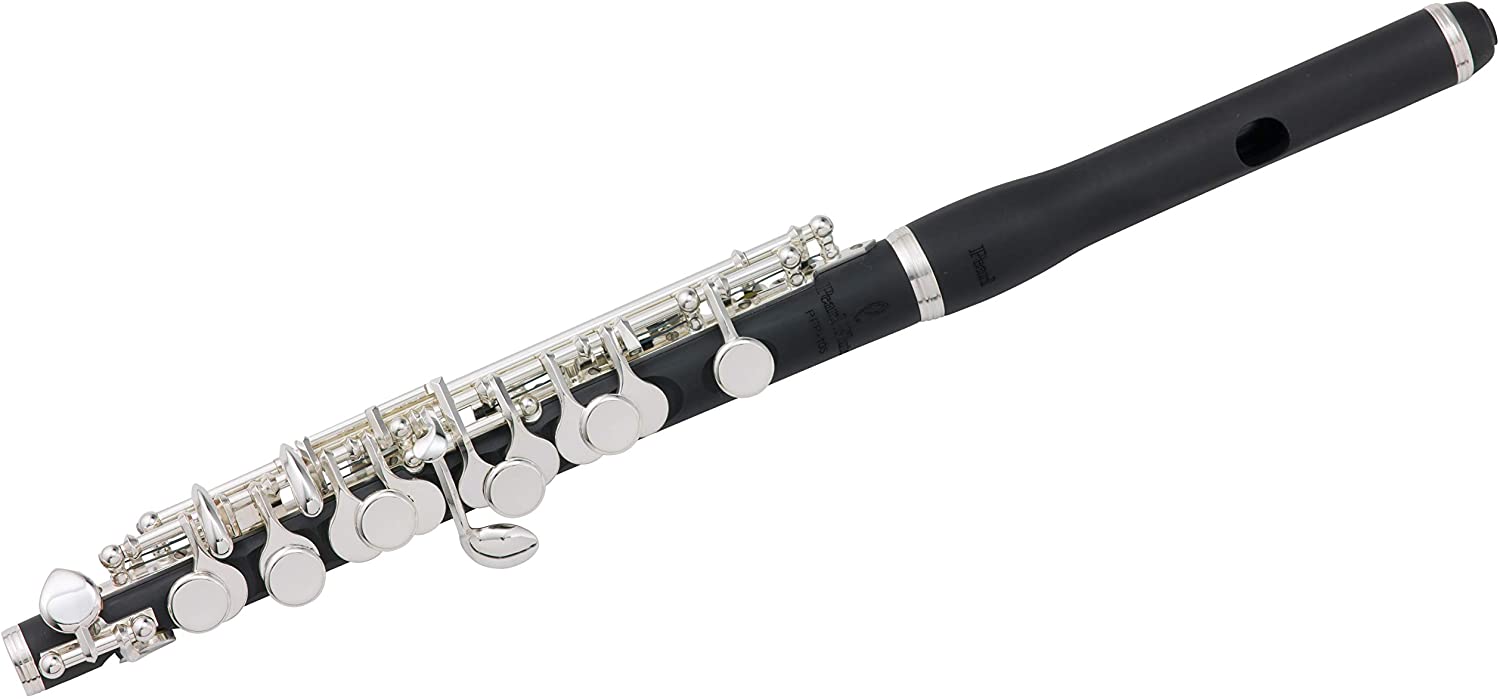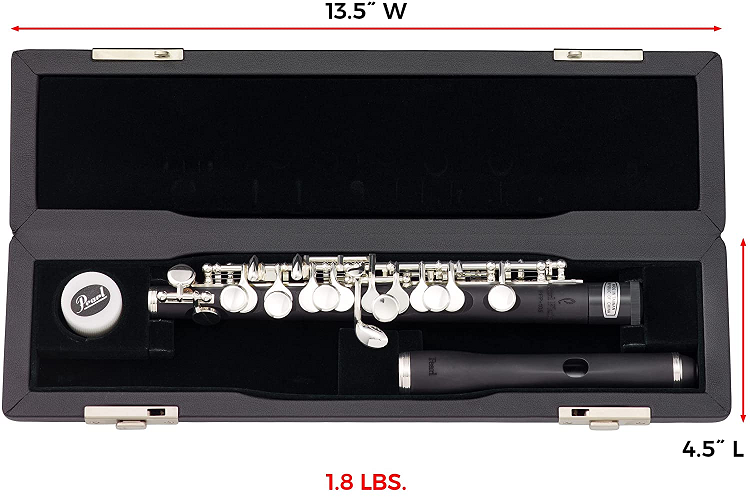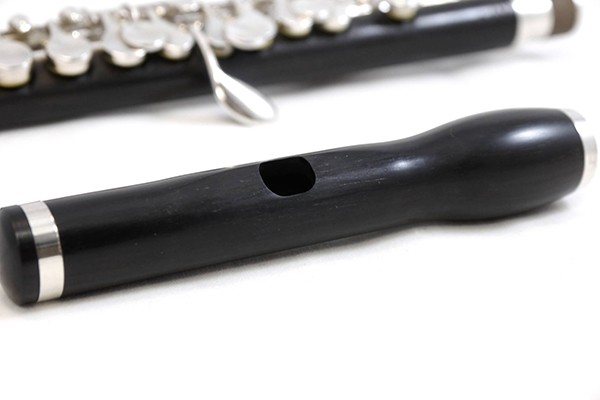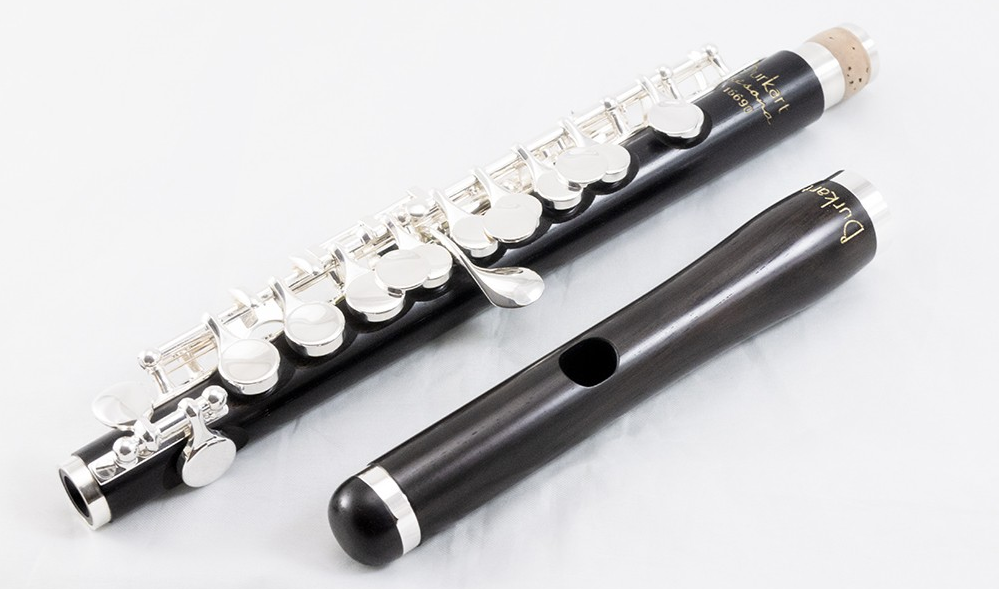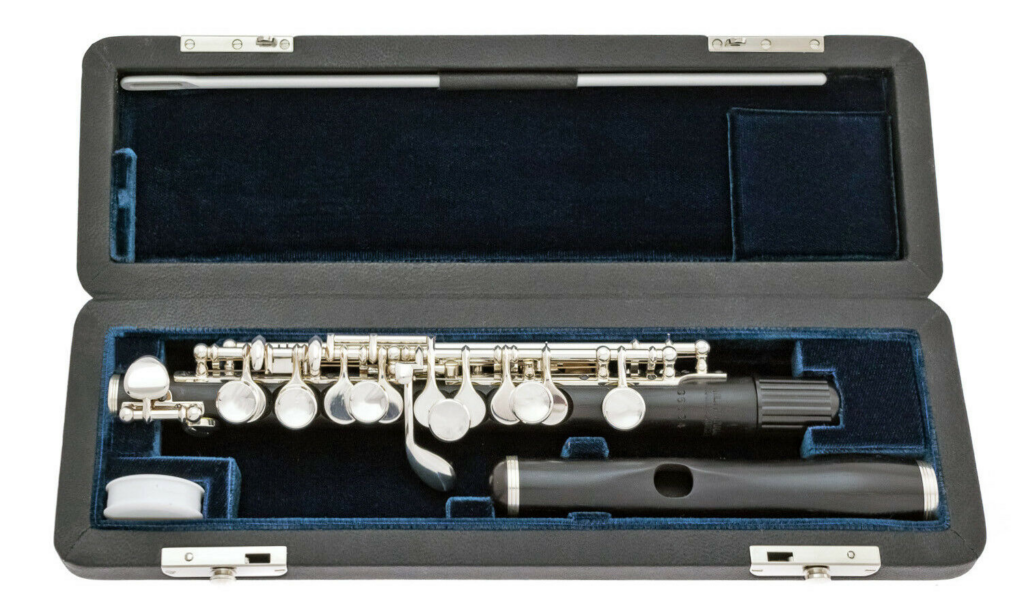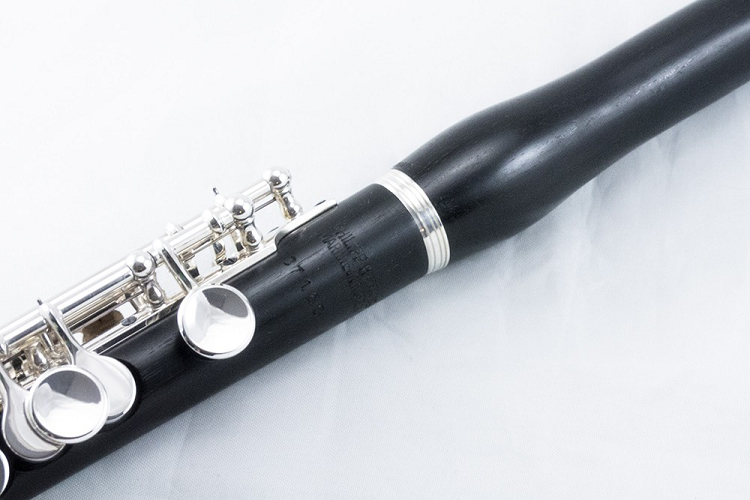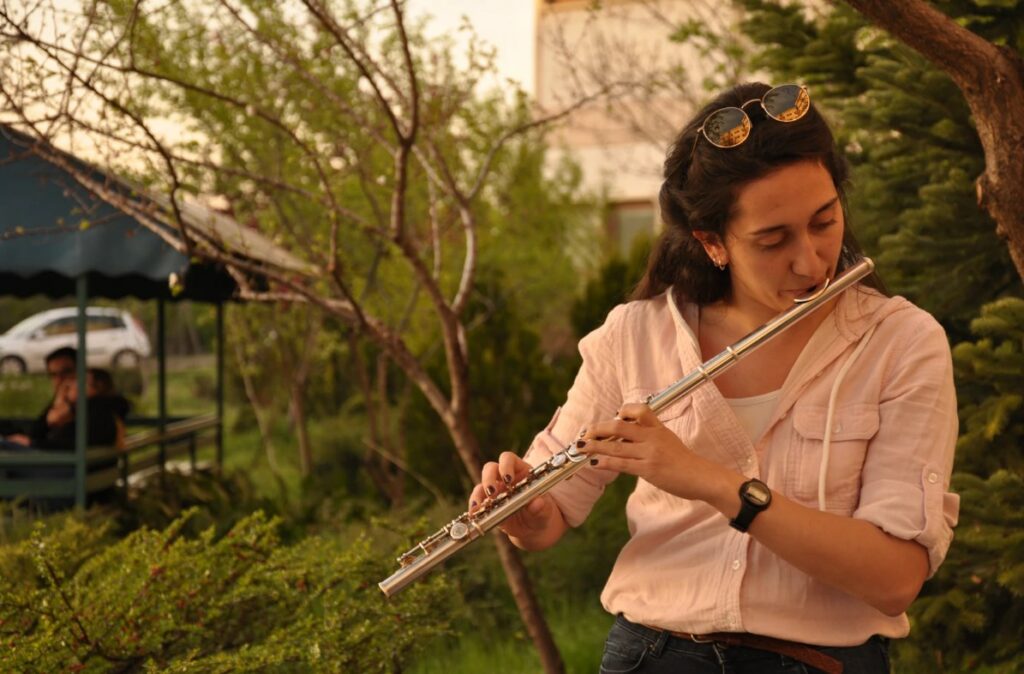- Top Trumpet Embouchure Techniques: Options for Beginners Through Professionals - October 12, 2022
- Is the Trumpet Hard to Learn? - September 30, 2022
- Best Leblanc Clarinet Models Guide: From Soprano to Contrabass - September 5, 2022
Do you want to set yourself apart from other flutists? You should learn how to find the best piccolo flutes so that you can take on the piccolo part in an ensemble.
Playing the piccolo has helped me get to perform in various orchestras and other groups. Plus, you get to explore a lot of cool music, but you need a good piccolo to start.
Bottom Line Up Front: Finding the best piccolo requires trying multiple instruments and having a good budget. I’d recommend the Pearl 105 for most players: beginners, advanced, and anyone in between.
How to Find the Best Piccolo
You can use a lot of the same steps to find the best piccolo as you would for any flute. But there are a few things you can do differently to help choose a piccolo that you’ll want to play.
Because if you buy a cheap, low-quality instrument, you’ll have to struggle to play it. The piccolo can already be annoying to listeners, so you don’t want to make things worse.
Instead, consider the following tips to help choose the best piccolo for you at this point in your musical journey.
Start With Your Flute
Many companies that make flutes also make piccolos and vice versa. So you should consider the brand of your current flute to help find a good piccolo.
For example, I currently play a Pearl flute, and I bought that flute about a year after getting my Pearl piccolo. But you could go the other way, so if you have a Pearl flute, consider a piccolo from them.
You can also look at flute brands you’ve played in the past. Since I’ve played a Trevor James and a Lyric, I might like the piccolos that those companies sell.
Apply that to your current and previous flutes that you’ve played. It may not always work, but it can help you start looking for a piccolo that will work well with you.
Think about Your Level
You should also determine what level of piccolo player you are. If you’re looking for your first piccolo, you should stick with beginner instruments, but you may want an upgrade after a while.
When I first started on the piccolo, I got a silver-plated model, which was similar to a flute. But I’ve since upgraded to a composite piccolo and now play a grenadilla wood instrument.
Plastic is another common material for beginner and step-up piccolos. You can also find combination piccolos that have a metal headjoint and a plastic or wood body.
Research Prices
No matter what level of piccolo you want, you should research what’s on the market. Specifically, take a look at the price tags of the piccolos you find.
If you’re doing this near the end of the year, add a few hundred dollars to the price. I’ve noticed piccolos tend to go up in price each calendar year.
Some piccolos cost around $1,000, give or take a few hundred dollars. However, others cost more than $19,000, though most people don’t need to spend this much.
Set a Budget
Researching piccolo prices is important because it can help you set a realistic budget. When I bought my first piccolo, I only had about $300 to spend, so I had to get a used model.
For my first upgrade, I had around $1,100 or so to spend. By the time I went for a wood model, I had saved up a little more than $5,000 to spend on a better instrument.
I was able to set those budgets after learning what various piccolos were selling for. That can help you make sure you have enough money to buy a piccolo with the specs you want.
Buy From a Reputable Seller
I’ve bought a piccolo online, and I was fortunate that it worked out. However, there are some scammers out there, so you want to research a seller before buying from them.
This is particularly crucial when buying a used piccolo since it may not be in good condition. You should buy through a music or flute store if possible.
If you get a used piccolo, be sure you or someone you trust can try it first. Then, you can make sure you don’t buy a model that won’t work as the seller claims.
Try the Piccolo
Even if you find a seller you trust, you should still try the piccolo you want to get. Not all piccolos are for all players, so you need to play it for yourself to find out if it will work.
I only tried one piccolo when getting my first and second models. But when it came time to drop $5k, I tried five different models and a variety of piccolo headjoints.
Be sure you choose some piccolo exercises or solos to use to test the different models. You can also bring your current piccolo to compare to the piccolos you want to purchase to see if there’s enough of a difference to justify the purchase.
Swap Out the Headjoints
If you’re looking at professional piccolos, most come with multiple headjoint cuts. I’d recommend trying as many of those as you can with the same piccolo body to see which suits you.
You can also look for aftermarket headjoints from makers like Mancke and Hernandez. Try their headjoints with any new piccolos you’re looking to buy as well as your current piccolo.
I did this when trying professional piccolos, which was great. But I ended up going with the manufacturer’s headjoint and didn’t buy a separate head for my wood piccolo.
However, buying just a new headjoint is much more affordable than buying an entire instrument. That can be a nice choice if you want a better sound but don’t have much money.
Get Feedback
One of the best things you can do when trying piccolos is to get feedback. I tried my first piccolo in front of my flute and piccolo repair tech, and she helped me decide to buy it.
When I tried professional piccolos, I tried them all with my graduate flute professor. She helped narrow the trial to a couple of models and some extra headjoints.
Then, I recorded myself playing on each combination and send the recordings to a couple of my flute friends. They helped me further narrow my search, especially since I didn’t tell them which recording was of which instrument.
A blind test can help you or your friends give a good opinion. You won’t base your thoughts on the brand or the cost of the piccolo.
Don’t Rush the Purchase
I started trying wood piccolos in 2017 and didn’t buy one until the end of 2020. That’s because I wanted to get the best possible instrument for my needs, and I think I did.
You should take all of the time you need to test instruments and to wait to save money. If you buy the first piccolo you try, it may be fine, but it may not be.
Taking time to think things over is particularly useful when buying a pro picc. But it can also come in handy when shopping for the first piccolo you’ll use to learn the basics.
Consider a Used Piccolo
New piccolos can quickly get expensive, so don’t just look at the new market. Some used piccolos are perfect, especially when you’re a beginner.
My parents bought me a used piccolo about eight years ago, and they saved over half of the cost of a new one. If you can find a similar deal, you can get a good piccolo without spending as much.
Now, you’ll want to make sure the piccolo is in good shape. I bought it through my flute tech, and I believe she worked on it before selling it for another client.
If a used piccolo needs repairs, you may actually spend more than you would buying a new one.
Sleep on It
Regardless of the piccolo you want to buy, take some time to think about the purchase. Ideally, you’d have a few days to think about how the piccolo feels and sounds.
Test it out over a few days and compare it to your current instrument. I was able to do this when trying professional piccolos, and it was super helpful.
It took a few days to make sure that the piccolo I chose was the best fit for me. A year and a half later, I’m still happy with my choice.
An Example Piccolo Upgrade and Trial History
To help you find the best piccolo for yourself, I want to share my upgrade and trial history. I’m only sharing piccolos that I’ve tried (or at least the brands).
The piccolos are all from reputable companies and are at varying price points. Hopefully, this example can help you decide what piccolos to try if you’re ready for your first or next one.
Now, not all of these are piccolos I ended up buying, but they may work better for you.
Armstrong 204
The first piccolo I tried and got was an Armstrong 204. It features a silver-plated headjoint and a silver-plated body, so it looks almost like a small flute.
I like that it has a lip plate to help new piccolo players transition from the flute. But the piccolo does have a rounded embouchure hole, which I’ve found doesn’t respond well for me.
However, other players may like that style a lot better. Even if it’s not my perfect piccolo, it played very well in college marching band and was great to use to practice over summer breaks when I couldn’t use a school piccolo.
Pros
- Lip plate
- Good for beginners
- Easy to play
- Available used
- Decent sound
Cons
- Expensive if you buy it new
- Not the best for orchestral playing
Yamaha YPC-62
When I was in college, I didn’t want to use my Armstrong for indoor stuff, like orchestra. Fortunately, I had access to a school-owned Yamaha, which I believe was a Yamaha YPC-62.
The piccolo uses grenadilla wood, so it sounds great in an orchestra, flute choir, wind ensemble, and solo. I used it for my indoor ensembles and on my junior and senior recitals.
It sounded great and was easy to play. Of course, I had to give it back to my flute professor at the end of the school year, but it was a nice instrument to use when I could.
Pros
- Good for indoor playing
- Easy to play
- Blends well
- Nice specs
- Wood model
Cons
- Can crack
- Not for outdoor use
Pearl 105
After I graduated from college, I tried to use my Armstrong for a few months. However, I was playing piccolo in a community orchestra, and I needed something better, so I bought the Pearl 105.
I had some savings from graduation gifts as well as a few Visa gift cards to help me pay for it. The piccolo is a composite model, which means it contains wood and plastic.
It also features a split E mechanism to help make that note easy to play. I chose the wave headjoint style, and I love how it responds to me when I play it.
Pros
- Composite material
- Different headjoint styles
- Easy to play
- Sounds great
- Blends nicely
Cons
- A bit expensive
- Not fully wood
Lyric Piccolo
A few months after getting my Pearl, I went to a small flute party that my flute tech was hosting. I tried a Lyric piccolo and briefly considered buying it.
The model uses grenadilla wood and has a wave style headjoint. It’s not that much more expensive than the Pearl, and I had played a Lyric flute which I really liked.
Sadly, I didn’t notice much of a difference in the sound between the Lyric and the Pearl. It wasn’t worth upgrading at that time, and it also wasn’t worth it when I tried it again a couple of years later.
Pros
- Wood model
- Affordable
- Easy to play
- Good sound
Cons
- Not the fullest tone
- No traditional headjoint cut
Burkart Resona
Another piccolo I tried at that flute party was a Burkart Resona. It’s another step-up or intermediate wood model and shares many specs with the Lyric.
The biggest difference is that with this one, you can choose a wave or traditional headjoint. I liked how it sounded, and it played well, too.
But also like the Lyric, I didn’t hear a huge difference compared to my Pearl piccolo. So I decided not to buy this instrument, especially since it’s significantly more expensive than the two other models I had tried at that point.
Pros
- Good sound
- Nice response
- Multiple headjoint cuts
- Easy to play
- Perfect for intermediate players
Cons
- Pretty expensive
- Not technically professional
Hammig 650/3
When I was ready to buy a wood piccolo, I settled on the Hammig 650/3. It features grenadilla wood and silver-plated keys and fittings, which keeps it from being too costly.
But it is a full-handmade instrument, so it costs a lot more than the other piccolos I had tried. I love that it features a split E mechanism and a high G# mechanism that makes those two notes easier to play.
The piccolo I chose came with a wave headjoint, but you can also get a traditional or a thin wave cut. It’s a great piccolo for serious players, but you’ll need to save a lot of money to buy it.
Pros
- Handmade model
- Unique specs
- Sounds amazing
- Responds well
- Full wood model
Cons
- Very expensive
- Can crack easily
Hammig 650/2
After trying a few other piccolos, my teacher and I decided I should try the Hammig 650/2 for a few days. I compared it to the 650/3, and it sounded okay.
However, this one came with a traditional headjoint, and I preferred the wave style. This piccolo has all of the same specs as the other Hammig model I tried except for the G# mechanism.
When I tried the piccolos, this was in my budget of $5,000 but the other one was a bit more expensive. I thought it was worth the extra couple hundred bucks to get the specs that I wanted.
Pros
- Handmade
- Good design
- Sounds nice
- Easy to play
- Wood model
Cons
- Minimal specs
FAQs about How to Find the Best Piccolo Flutes
Answer: I can’t say that one piccolo brand or model is always the best. It depends on your playing style and experience, and the best piccolo for you can change.
For example, the Armstrong 204 was great for me six years ago. The Pearl 105 worked well for me two or three years ago, but the Hammig 650/3 suits me better now. None of those models work for everyone, so you need to choose one yourself.
Answer: Once again, no single piccolo is always the best for beginners. However, I’d recommend trying the Armstrong 204, the Pearl 105, and the Yamaha YPC-32.
Those piccolos are all pretty common among students, and they’re not too expensive. Be sure to try all of them to decide which is right for you.
Answer: A good student piccolo costs around $1,000, give or take $200. You may be able to find good piccolos for less if you shop for a used one, but they can still top $500.
If you’re looking for an intermediate model, $1,500 to $3,000 is a nice budget. Professional piccolos start at around $5,000 and can go up to $19,000.
Answer: Some good piccolo brands include Armstrong, Pearl, Yamaha, Lyric, Hammig, and Burkart. A few of these brands, such as Armstrong, Pearl, and Lyric, focus on piccolos for students and intermediate players.
On the other hand, Hammig and Burkart are two professional piccolo brands. Yamaha makes instruments for all levels, so you can try a Yamaha at any time.
Final Note on How to Find the Best Piccolo Flutes
Knowing how to find the best piccolo flutes is crucial if you want to sound good on the instrument. I love my Hammig 650/3, but it’s way too expensive and high-maintenance for beginners.
If you’re starting on the piccolo, try an Armstrong 204 or Pearl 105. They’re more affordable and aren’t wood, so you can play them anywhere without the risk of wood cracking.
For more interesting readings check out:



